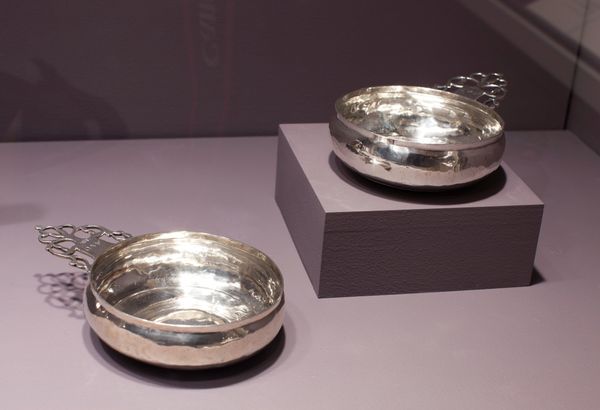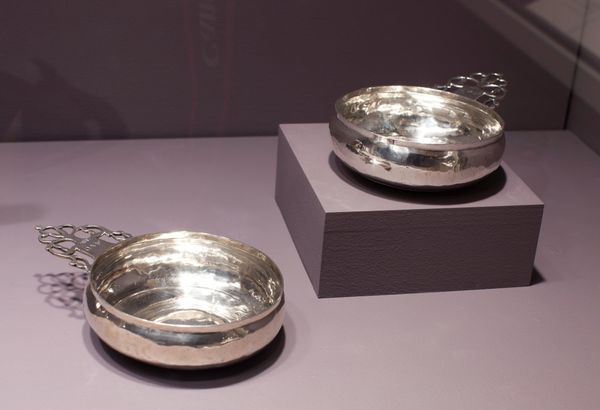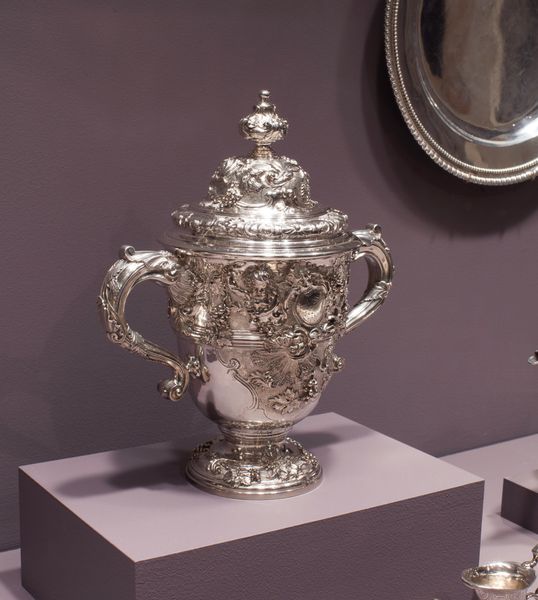
silver, metal
#
silver
#
baroque
#
metal
#
england
#
decorative-art
Dimensions: 2 3/16 x 3 1/2 x 3 1/2 in. (5.56 x 8.89 x 8.89 cm)
Copyright: Public Domain
Curator: Before us we have a "Salt cellar" crafted between 1728 and 1729 by Paul de Lamerie. It is currently part of the collection at the Minneapolis Institute of Art. Editor: What strikes me first is the sheer opulence. It is this shining, weighty quality of the silver, this overt display. I wonder about the labor involved in its creation. Curator: Absolutely. De Lamerie was a Huguenot silversmith who became incredibly prominent in London, catering to the aristocratic elite. These pieces, very much of the Baroque style, speak volumes about status and the culture of conspicuous consumption in 18th-century England. Editor: Conspicuous indeed! Think of the processes. Silver mining, smelting, the workshops bustling with specialized artisans. Each chasing details, all these hands contributing to one table piece. Curator: Precisely. It’s not just the raw material but the skilled labour elevated. Silverware like this signaled not just wealth, but also social refinement and cultivated taste—critical markers for England's upper class at the time. Editor: I see these cellars and imagine how the dining experience transformed. Utensils became props, and ritual became theatrical. Did these refined implements mask something less savory—imperial exploitation and raw material procurement that bankrolled all this finery? Curator: Certainly, art and its history cannot be divorced from that history. The rise of a consumer society, driven by colonial trade and labour exploitation, provided the social framework for the creation and appreciation of such luxurious objects. Editor: Right. By tracing the materials and processes, we unearth not just craftsmanship, but the intertwined, often troubling networks that sustained such luxury. Even the "Salt cellar" is not neutral; its gleam reflects both mastery and systemic disparity. Curator: Exactly. Viewing art from this lens really allows one to understand the multiple layers of meaning it may embody. Thank you for illuminating some of these other aspects for us. Editor: My pleasure! Let’s consider, then, that even something as ornamental carries a legacy of material extraction and social stratification still shaping today.
Comments
No comments
Be the first to comment and join the conversation on the ultimate creative platform.













